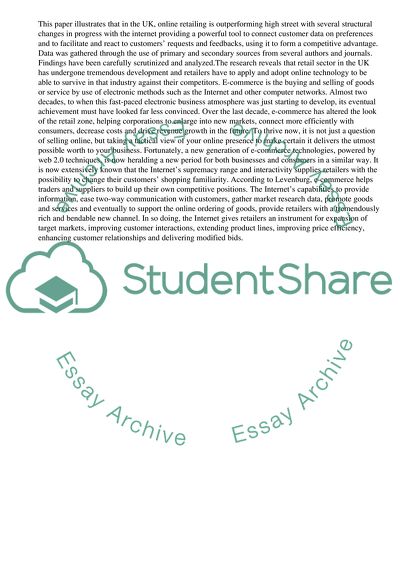Cite this document
(“How Has the Growth of Ecommerce Affected the Retail Sector in the UK Research Paper”, n.d.)
How Has the Growth of Ecommerce Affected the Retail Sector in the UK Research Paper. Retrieved from https://studentshare.org/business/1609927-how-has-the-growth-of-ecommerce-affected-the-retail-sector-in-the-uk-in-over-the-last-10-years
How Has the Growth of Ecommerce Affected the Retail Sector in the UK Research Paper. Retrieved from https://studentshare.org/business/1609927-how-has-the-growth-of-ecommerce-affected-the-retail-sector-in-the-uk-in-over-the-last-10-years
(How Has the Growth of Ecommerce Affected the Retail Sector in the UK Research Paper)
How Has the Growth of Ecommerce Affected the Retail Sector in the UK Research Paper. https://studentshare.org/business/1609927-how-has-the-growth-of-ecommerce-affected-the-retail-sector-in-the-uk-in-over-the-last-10-years.
How Has the Growth of Ecommerce Affected the Retail Sector in the UK Research Paper. https://studentshare.org/business/1609927-how-has-the-growth-of-ecommerce-affected-the-retail-sector-in-the-uk-in-over-the-last-10-years.
“How Has the Growth of Ecommerce Affected the Retail Sector in the UK Research Paper”, n.d. https://studentshare.org/business/1609927-how-has-the-growth-of-ecommerce-affected-the-retail-sector-in-the-uk-in-over-the-last-10-years.


